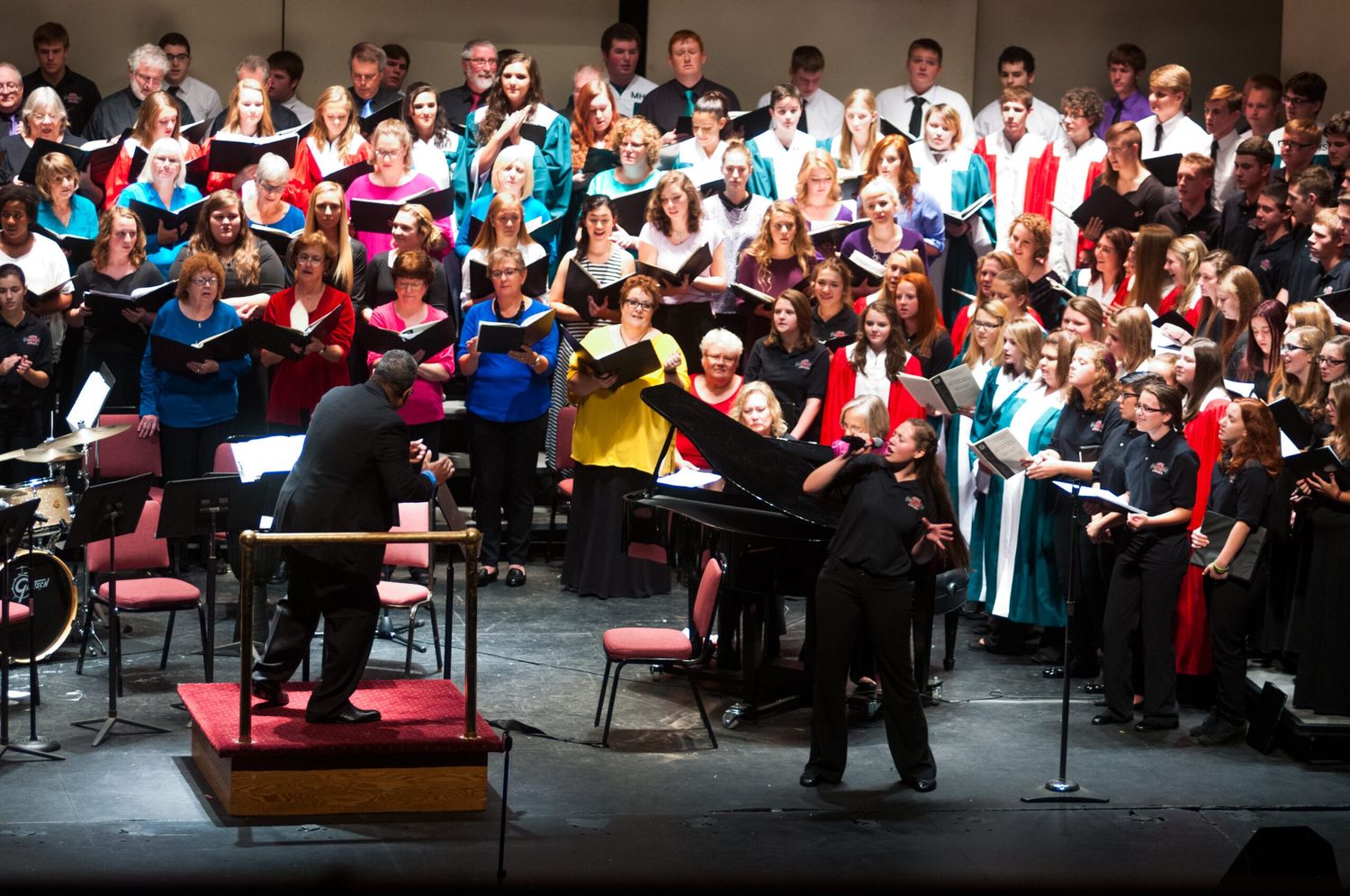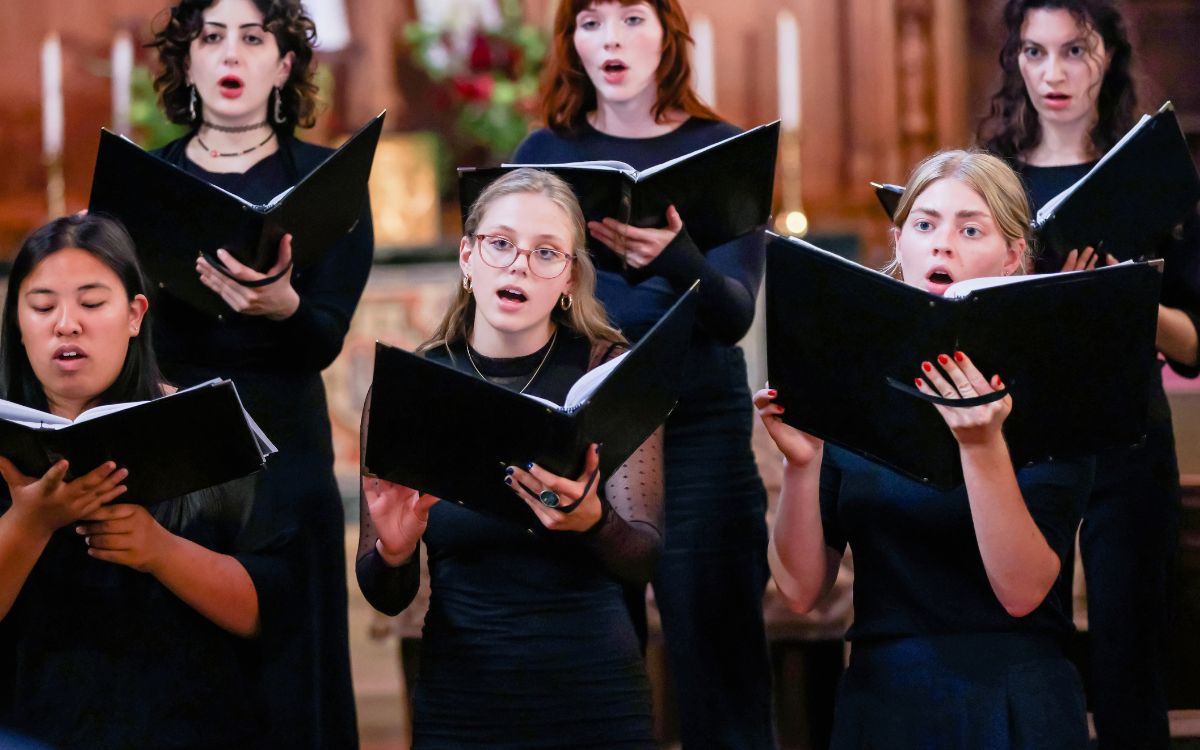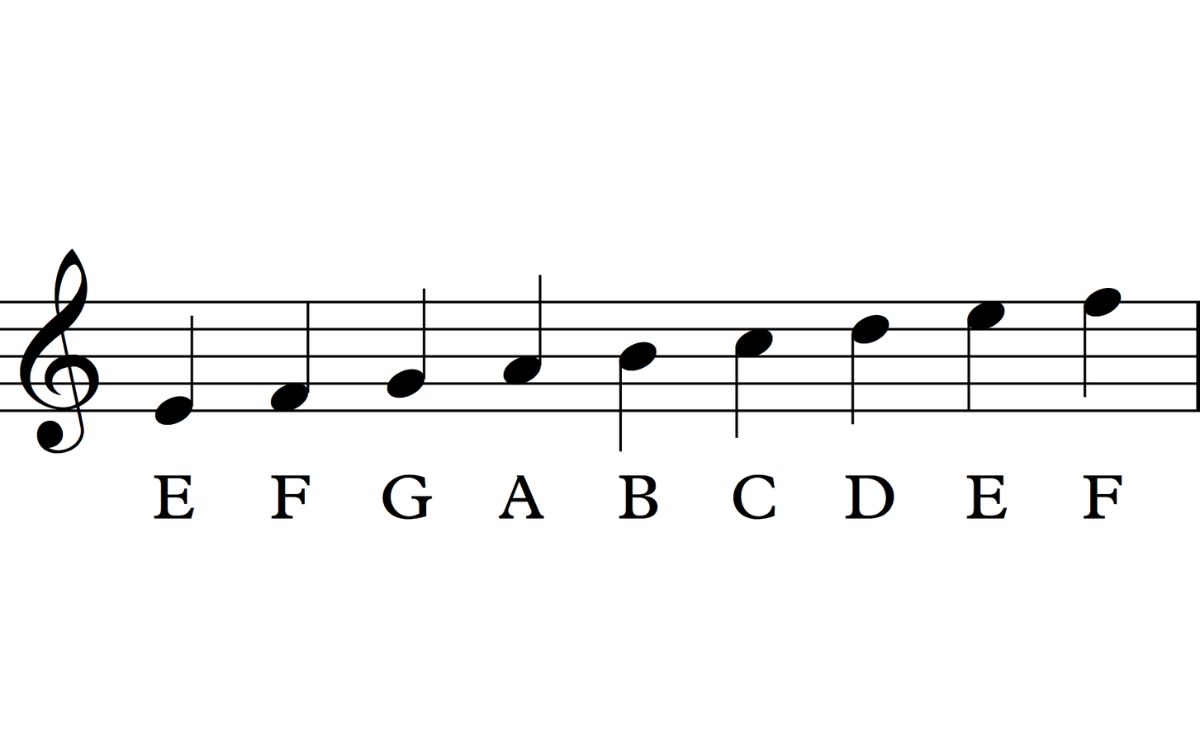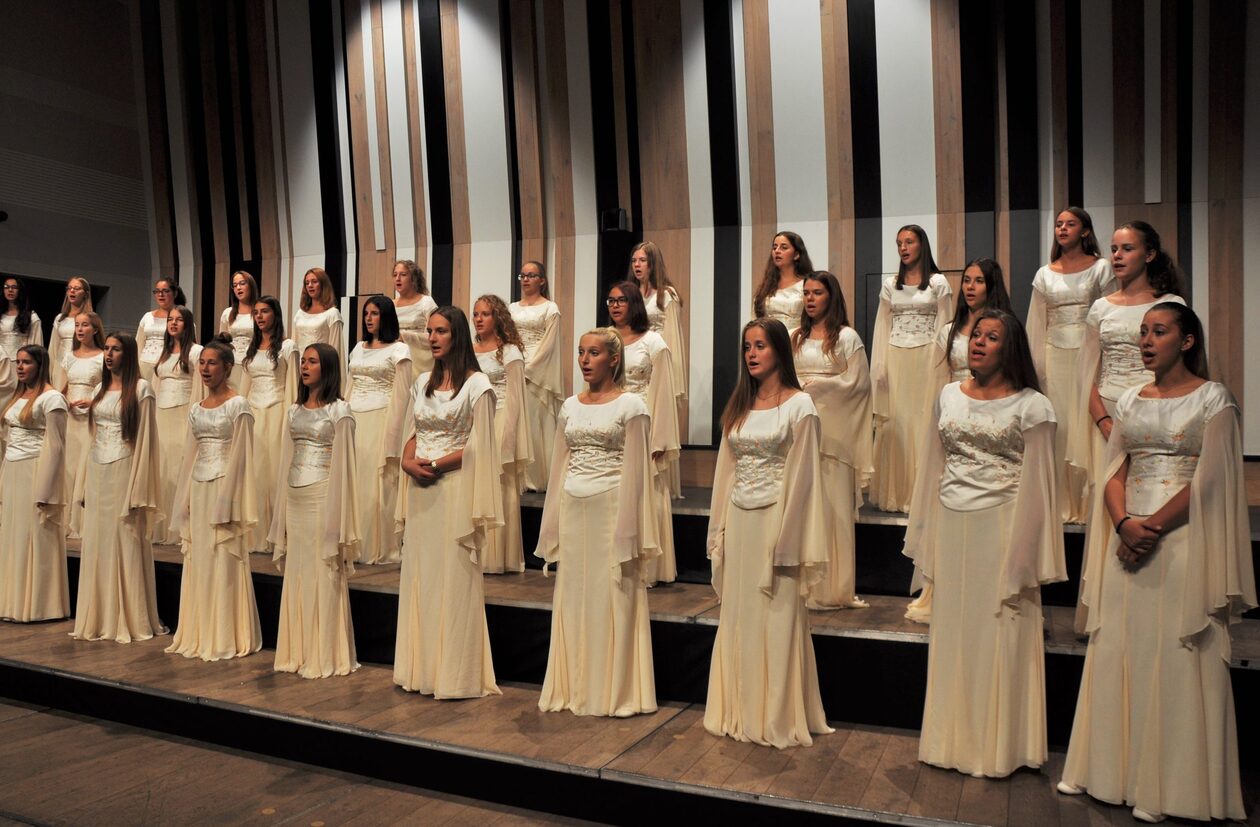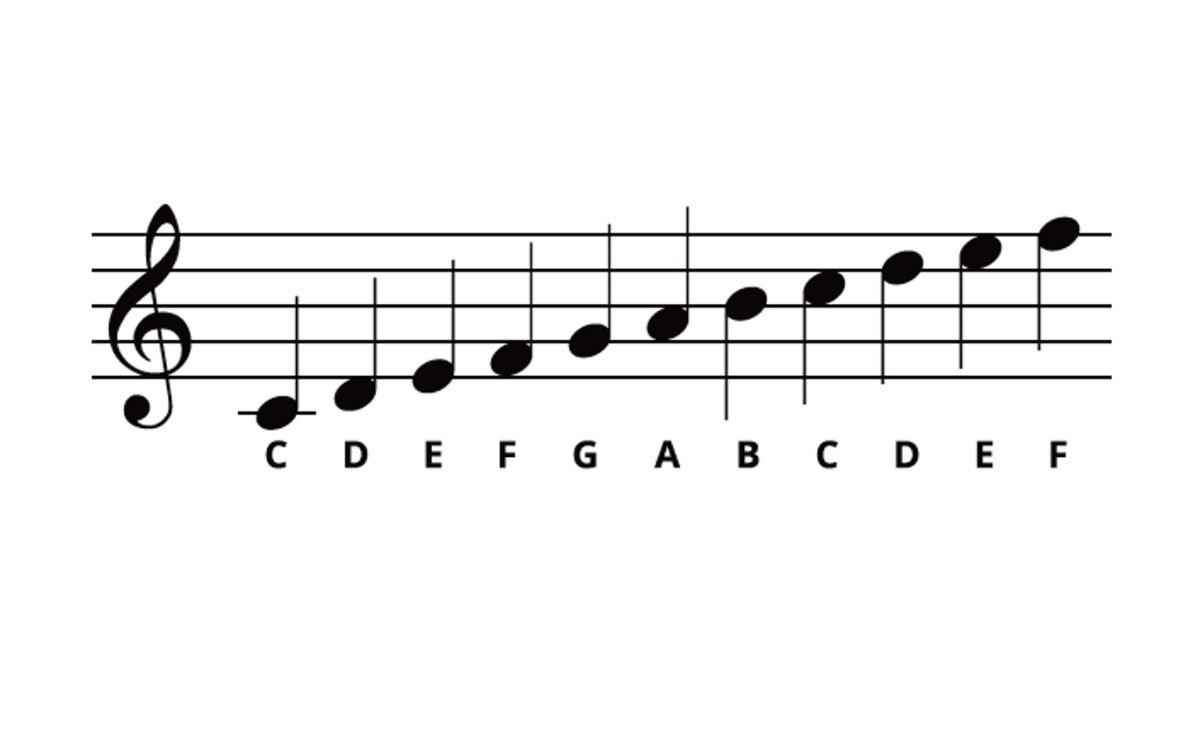Home>Production & Technology>Treble>What Is A Treble Choir
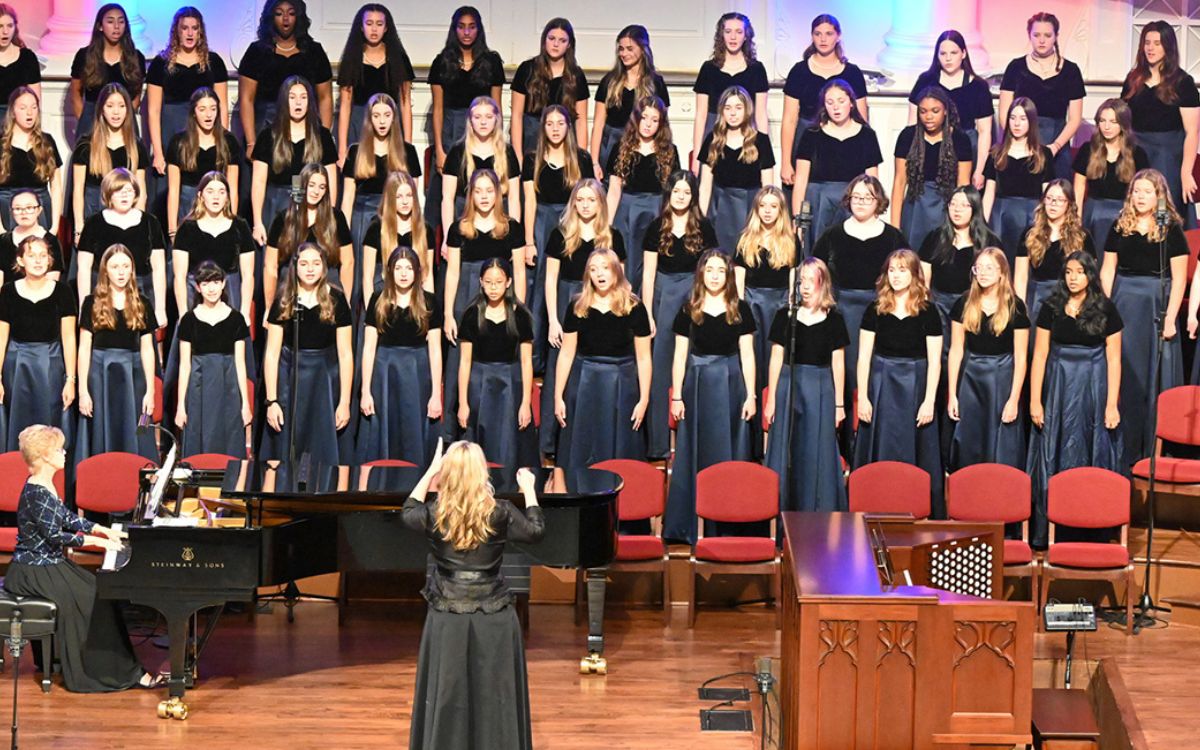

Treble
What Is A Treble Choir
Modified: January 22, 2024
Discover the beauty of treble choirs and their unique sound. Learn about the history and repertoire of treble singers and how they add a captivating dimension to choral music.
(Many of the links in this article redirect to a specific reviewed product. Your purchase of these products through affiliate links helps to generate commission for AudioLover.com, at no extra cost. Learn more)
Table of Contents
Introduction
A treble choir is a vocal ensemble that consists of singers with high-pitched voices, typically children or female singers. It is a unique and beautiful subset of choral singing that focuses on showcasing the upper register of the vocal range. Treble choirs have a long and rich history, dating back to medieval times when boys were chosen to sing the higher parts in church music.
In modern times, treble choirs have evolved to include not only boys but also girls and women with soprano or alto voices. This expansion has opened up new possibilities for repertoire and musical expression. Treble choirs can be found in schools, churches, community centers, and professional settings, providing opportunities for singers of all ages to develop their voices and perform in a supportive and collaborative environment.
In this article, we will explore the world of treble choirs in more detail, including their voice range and characteristics, repertoire and musical style, training and skill development, performance opportunities, as well as the advantages and challenges of singing in a treble choir. Whether you are a singer, a music educator, or simply curious about choral music, this article will provide you with a comprehensive understanding of what a treble choir is and why it is so special.
Definition of a Treble Choir
A treble choir is a vocal ensemble that primarily consists of singers who have high-pitched voices. The term “treble” refers to the upper part of the vocal range, typically occupied by sopranos and altos. Historically, treble choirs were made up of young boys with unchanged voices, selected for their ability to sing in the higher register. However, in modern times, treble choirs include both boys and girls, as well as adult female singers who sing in the soprano and alto ranges.
The term “treble” is often used interchangeably with “children’s choir” or “youth choir,” as it commonly signifies a choir composed of young singers. Treble choirs typically focus on vocal training and development for singers in the high register. The primary goal is to showcase the clarity, purity, and agility of the treble voice.
It is important to note that the term “treble” can also refer to a specific vocal part within a mixed choir. In this context, the treble voices encompass both soprano and alto ranges, while the lower vocal parts include tenors and basses. However, in the context of this article, we will be focusing on treble choirs as standalone ensembles.
Treble choirs can be found in various settings, including schools, churches, community music programs, and professional choirs. They provide a platform for young singers to develop their musical skills, express their creativity, and learn the art of choral singing. Treble choirs play an essential role in nurturing young talent, providing a foundation for vocal development, and encouraging a lifelong love for music.
Now that we have defined what a treble choir is, let’s delve deeper into its voice range and characteristics.
Voice Range and Characteristics
A treble choir primarily consists of singers with high-pitched voices, showcasing the upper registers of the vocal range. The treble voice range typically includes the soprano and alto ranges, encompassing the highest female vocal parts.
Sopranos are known for their ability to sing in the highest pitch range with a bright and clear tone. Their voices can soar above the ensemble, effortlessly hitting high notes with precision and clarity. Sopranos can exhibit a wide range of vocal qualities, from delicate and ethereal to powerful and dramatic, depending on the musical style and expression required.
Altos, on the other hand, have a slightly lower vocal range than sopranos but still maintain a clear and melodic tone. They provide a warm and rich foundation to the treble sound, balancing the higher voices with their harmonies and vocal texture. Altos often contribute to the overall depth and resonance of the treble choir’s sound.
One of the key characteristics of a treble voice is its agility. Treble singers possess the ability to navigate intricate melodic lines and execute rapid vocal runs with precision. This agility allows for expressive interpretation of the music and creates a sense of fluidity and excitement in performances.
In addition to agility, treble voices are known for their purity and clarity. The high pitches in the treble range have a natural brightness that can cut through the texture of a choir or blend seamlessly with other treble voices. This clarity of tone allows intricate harmonies and musical nuances to be heard distinctly, enhancing the overall musical experience.
It is important to note that the voice range and characteristics of a treble choir can vary depending on the age and level of the singers. In children’s treble choirs, the voices may be lighter and more flexible, while adult treble choirs may exhibit a richer and fuller sound.
Now that we have explored the voice range and characteristics of a treble choir, let’s move on to discuss the repertoire and musical style often associated with this type of ensemble.
Repertoire and Musical Style
Treble choirs have a diverse and extensive repertoire that spans various musical styles and genres. The choice of repertoire for a treble choir depends on factors such as the age and skill level of the singers, the intended audience, and the overall artistic vision of the ensemble.
Classical choral music forms a significant part of the treble choir repertoire. This includes works by renowned composers such as Mozart, Bach, Handel, and Vivaldi, which feature intricate vocal harmonies, polyphonic textures, and expressive melodies. The treble choir’s agility and clarity of tone allow them to navigate the complex musical passages and bring out the beauty of the compositions.
In addition to classical music, treble choirs often explore folk songs and traditional choral repertoire from various cultures. These songs provide a rich tapestry of diverse musical traditions, allowing singers to explore different vocal techniques and musical languages. Folk songs are often characterized by lyrical melodies and storytelling, providing an opportunity for treble choirs to convey emotions and narratives through their singing.
Contemporary choral music also plays a significant role in the treble choir repertoire. Composers such as Eric Whitacre, Ola Gjeilo, and Bob Chilcott have created a wealth of modern compositions specifically tailored for treble voices. These compositions often blend elements of classical, jazz, and pop music, incorporating unique harmonies, rhythmic complexities, and innovative vocal techniques. The contemporary repertoire challenges treble choirs to explore new sounds and push the boundaries of traditional choral music.
Alongside the traditional choral repertoire, treble choirs often venture into musical theater and popular music arrangements. This allows them to showcase their versatility and engage a wider audience. Singing musical theater pieces requires not only vocal skill but also acting and stage presence, adding a theatrical element to the performance. Popular music arrangements give treble choirs the opportunity to connect with a younger audience and perform familiar songs in a choral setting, bringing a fresh and unique perspective to the music.
The musical style of a treble choir can vary depending on the repertoire being performed. The style can range from the refined and precise interpretation of classical music to the light-hearted and energetic delivery of folk songs or the expressive and emotive rendition of contemporary compositions. The versatility of treble choirs allows them to adapt to different musical styles, showcasing the breadth and depth of their vocal abilities.
Now that we have explored the repertoire and musical style of treble choirs, let’s delve into the training and skill development involved in becoming a member of a treble choir.
Training and Skill Development
Joining a treble choir requires dedicated training and skill development to meet the technical and artistic demands of choral singing. Whether you are a child, teenager, or an adult, being a member of a treble choir offers a unique opportunity to refine your vocal abilities and develop your musical talent.
Vocal training is a fundamental aspect of being in a treble choir. Singers work on developing proper vocal technique, focusing on breath control, posture, and vocal resonance. This training helps singers produce a clear and resonant tone, navigate challenging melodic lines, and maintain vocal health and stamina.
Music literacy is another crucial skill for treble choir singers. Reading sheet music, understanding musical notation, and sight-reading are essential components of being part of a choir. Singers learn to interpret musical symbols, follow the conductor’s cues, and sing their individual parts accurately within the ensemble.
Ear training is also emphasized in treble choirs. Singers develop their ability to listen and blend harmoniously with other voices in the ensemble. They learn to tune their ears to the nuances of intonation, dynamics, and phrasing, creating a unified and balanced choral sound.
Artistic expression and interpretation are fostered through rehearsal and performance experiences. Singers learn to convey the emotions and intentions of the music through their vocal expression and body language. They work on understanding the meaning and context of the songs they perform, allowing them to connect deeply with the music and communicate its essence to the audience.
In addition to vocal and musical training, being part of a treble choir offers a valuable opportunity for personal growth and social development. Singers learn valuable skills such as teamwork, discipline, and responsibility as they work together towards a common musical goal. They develop a sense of camaraderie and belonging within the choir, forging lasting friendships and creating lifelong memories.
Many treble choirs offer additional educational opportunities such as vocal masterclasses, workshops, and individual coaching. These experiences provide singers with personalized guidance and feedback to further enhance their vocal technique and musicality.
Overall, the training and skill development involved in being a part of a treble choir contribute to the growth and well-rounded musical development of singers. Whether it is honing vocal technique, expanding musical literacy skills, or fostering artistic expression, membership in a treble choir provides a nurturing environment to develop one’s singing abilities to their fullest potential.
Now that we have explored the training and skill development in a treble choir, let’s move on to discuss the performance opportunities available for treble choir singers.
Performance Opportunities
Treble choirs offer a wide range of performance opportunities that allow singers to showcase their talents and connect with audiences. These performances not only serve as a platform to share the joy of choral music but also provide valuable experiences for personal and artistic growth.
One of the primary performance opportunities for treble choirs is concerts. Choirs often perform in various concert settings, such as schools, churches, concert halls, and community events. These concerts feature carefully curated repertoire, highlighting the unique qualities of the treble voice. Singers have the chance to perform in solo or ensemble pieces, showcasing their vocal abilities and musical interpretation.
Participating in choral competitions is another exciting opportunity for treble choirs. Competitions provide a platform for choirs to demonstrate their technical skill, musicality, and ensemble cohesion. These events offer valuable feedback from esteemed adjudicators, allowing choirs to assess their progress and receive constructive criticism to further elevate their performance quality.
Treble choirs also have the chance to collaborate with other ensembles, such as orchestras, bands, or other choirs. Joint performances offer a unique musical experience, creating a harmonious fusion of voices and instruments. These collaborations showcase the versatility of treble voices and provide opportunities for singers to expand their musical horizons.
In addition to formal concerts, treble choirs often contribute to their communities through choral outreach programs. Singers may perform at nursing homes, hospitals, schools, or community centers, bringing the joy of music to those who may not have regular access to live performances. These outreach performances allow treble choirs to make a positive impact in their communities and inspire others through the power of choral music.
Some treble choirs also have the opportunity to embark on tours. Singers travel to different cities, regions, or even countries, performing in prestigious venues and sharing their music with diverse audiences. Tours provide a unique cultural and educational experience, allowing singers to immerse themselves in different musical traditions and connect with fellow musicians from around the world.
For aspiring singers, joining a treble choir can also be a stepping stone to higher-level choral ensembles. Many treble choirs serve as feeder groups for renowned youth choirs or professional vocal ensembles. Singers who demonstrate exceptional talent and commitment may have the opportunity to audition for these advanced groups, providing a pathway for further musical growth and career opportunities.
Overall, the performance opportunities available to treble choirs are diverse and rewarding. From concerts to competitions, collaborations to outreach programs, these experiences allow singers to develop their confidence, refine their skills, and share their passion for choral music with audiences near and far.
Now that we have explored the performance opportunities in treble choirs, let’s discuss the advantages and challenges of singing in a treble choir.
Advantages and Challenges of Singing in a Treble Choir
Singing in a treble choir comes with a multitude of advantages that contribute to personal, musical, and social growth. However, like any endeavor, there are also certain challenges that treble choir singers may encounter along their musical journey.
One of the primary advantages of singing in a treble choir is the opportunity for vocal development. Singers have the chance to refine their technique, expand their vocal range, and develop their musicality in a supportive and nurturing environment. Working with experienced choral directors and vocal coaches allows them to receive valuable feedback and guidance, enabling them to reach their full vocal potential.
Being a part of a treble choir also fosters a strong sense of community and teamwork. Singers learn to blend their voices harmoniously with others, navigate intricate vocal harmonies, and synchronize their performance. This collaborative aspect of choral singing instills important life skills such as cooperation, communication, and mutual respect, which are transferable to various aspects of life.
Treble choir singers have the opportunity to delve into a wide variety of musical genres and styles. They can explore classical choral music, folk songs, contemporary compositions, and even popular music arrangements. This diverse repertoire helps develop versatility, adaptability, and an appreciation for different musical traditions, broadening their musical horizons.
Performing in a treble choir provides opportunities for personal growth and self-expression. Singers learn to communicate emotions, tell stories, and convey messages through their voices, connecting with audiences on an emotional level. This artistic outlet allows singers to develop confidence, creativity, and stage presence, influencing them positively both on and off the stage.
However, singing in a treble choir also presents certain challenges. One common challenge is the physical strain on the voice. Singing in the higher vocal ranges requires vocal control and stamina to navigate challenging melodic lines and sustain high pitches. Vocal fatigue and the risk of vocal strain are potential concerns, requiring proper vocal care and technique training.
Another challenge is maintaining balance within the ensemble. Treble choirs must achieve a harmonious blend of voices while allowing individual voices to shine. Balancing dynamics, intonation, and vocal timbre is crucial to creating a cohesive and unified choral sound, which requires the active engagement and cooperation of every singer in the choir.
Additionally, the wider vocal range of a treble choir may present challenges in terms of repertoire selection. Choir directors must carefully choose pieces that showcase the strengths of the treble voices while avoiding straining or pushing singers beyond their vocal capabilities. This requires knowledge and expertise in selecting appropriate and challenging repertoire that complements the skills and abilities of the singers.
Despite these challenges, the advantages of singing in a treble choir far outweigh the difficulties. The personal and musical growth, the sense of community and collaboration, and the joy of sharing music with audiences make the journey in a treble choir immensely rewarding for singers of all ages.
Now that we have explored the advantages and challenges of singing in a treble choir, let’s conclude our discussion.
Conclusion
Treble choirs offer a captivating and unique experience in the world of choral singing. With their high-pitched voices and emphasis on showcasing the upper registers of the vocal range, treble choirs provide a platform for singers to develop their vocal skills, explore diverse musical styles, and connect with audiences in meaningful ways.
From the definition of a treble choir and its historical roots to exploring the voice range and characteristics, repertoire and musical style, training and skill development, as well as performance opportunities, we have delved into the intricacies of this fascinating ensemble.
Being a part of a treble choir offers countless advantages. Singers have the opportunity to grow as vocalists, refine their technique, and expand their musicality. They learn invaluable life skills such as teamwork, discipline, and responsibility, all while fostering a strong sense of community and connection with fellow singers.
The diverse repertoire of treble choirs allows singers to explore various musical genres and styles, broadening their artistic horizons and enhancing their appreciation for choral music as a whole. Performance opportunities, ranging from concerts and competitions to collaborations and outreach programs, provide platforms for treble choir singers to share their musical talents and make a positive impact in their communities.
However, singing in a treble choir also presents challenges, including vocal strain, achieving balance within the ensemble, and selecting appropriate repertoire. Nonetheless, these challenges can be overcome with proper vocal training, guidance from experienced directors, and a supportive choir community.
In conclusion, being a part of a treble choir is a rewarding journey that nurtures the voice, fosters personal growth, and creates lasting memories. Whether you are a singer, a music educator, or simply a lover of choral music, treble choirs offer a unique and captivating experience that showcases the beauty and versatility of the treble voice.
So, embrace the treble choir experience, let your voice soar, and immerse yourself in the joy and artistry of choral singing.


